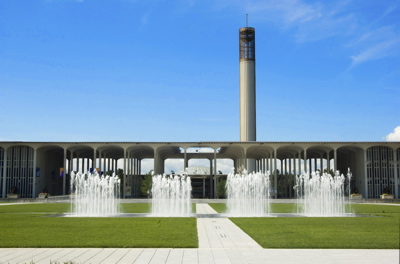University of Albany : Open Source Festival
April 12, 2012

On Thursday, March 29th, the University of Albany Student Chapter of the American Society for Information Science & Technology (ASIS&T) organized the 2nd Annual:
UAlbany ASIS&T Open Source Festival 2012
https://sites.google.com/site/opensourcefestival2012/
at the Campus Center of SUNY Albany.

Kitware joined the event with the participation of Will Schroeder, Bill Hoffman, and Luis Ibanez who delivered the following talks:
- Open Source Business Models – Will Schroeder spoke about the variety of business models that have been used to monetize open-source software and communities. (This was a timely talk given Red Hat’s recent announcement that the company exceeded $1 billion in revenue by relying mostly on a subscription model.) Dr. Schroeder discussed a variety of business approaches ranging from open source as a hobby to consulting, dual licensing, and collaborative R&D (which is a major component of the Kitware model).
- Open Source Quality Processes – Bill Hoffman discussed how open-source practices result in higher-quality software due to the many eyes theory, which states that the more people with access to source code, the quicker bugs are detected and fixed. Although not all open-source projects will benefit from this theory as much as the Linux kernel, there are open tools and processes that enable developers to share and test software regardless of community size. Tools including Git, CMake, CTest, and CDash are examples of freely-available tools for managing, building, and testing high-quality software – while also reducing maintenance costs and maximizing community involvement.
- Open Source in Healthcare – Luis Ibanez introduced the economic relevance of healthcare costs in the US, currently 18% of GDP, and described how the open-source community can contribute in reducing the cost of healthcare and simultaneously increasing its quality by participating on the open-source initiatives surrounding the development of electronic health record (EHR) systems. In particular, in the case of the Veterans Health Information Systems and Technology Architecture (VistA), and the open-source EHR Agent (OSEHRA).
- Open Source in Education – Luis Ibanez also presented on how Kitware has partnered with Rensselaer Polytechnic Institute (RPI) since 2007, to offer an Open-Source Software Practices class. The sixth edition of this class is being taught in the current Spring 2012 semester. In this class, students are exposed to basic principles of economics; models of peer-production; social principles of collaboration; the legal basis of copyrights, patents, and trademarks; principles of software licensing; and the motivational aspects of cooperation. Simultaneously, students are able to practice interaction skills with open-source communities through use of revision control systems, mailing lists, forums, wikis, code peer-review systems, software quality control, and documentation.
The event brought together many groups invested in open source, along with others interested in learning more about the Way of the Source.
Some of the highlights of the event included:
- Two open-source initiatives of the New York State Senate were presented:
- Indexing Legislation with Lucene, by Graylin Kim, described a web-based application for making the content of legislation in process be made available to the general public. The OpenLegislation service enables multifaceted, full text searching across legislation for the 2009 and 2011 sessions. Lucene, an open-source full text search engine, is used to power this service and open the New York Senate’s legislative process to the public.
- Open Source in the New York State Senate, by Ken Zalewski, presented how in 2009, the New York State Senate began building the next generation of government applications on a platform of open source software. Today our new constituent information system, the nysenate.gov website, and OpenLegislation services run on a variety of open source software packages including: Drupal, CiviCRM, MySQL, Apache2, Tomcat, Java, PHP, Varnish, Lucene, and Memcache.
- Dr. Tara Lindsley from Albany Medical College presented on the use of open-source software for the creation of a Virtual Brain Model, to be used as a learning resource in neuro-anatomy classes. One of the most challenging learning objectives in the medical neuroscience curriculum is to understand the complex spatial relationships of functionally-important structures buried deep inside the brain, especially those that are too small to resolve on an MRI. This presentation described how a team of students and educators at Albany Medical College used open-source software as a platform to create a program that allows the user to build 3D virtual models of the human brain, showing up to 80 different structures. The models can be zoomed, rotated 360° and varied in color and opacity, then saved or printed as study aids. The software is available at: http://www.amc.edu/academic/software/, and is based on ITK and ITK-SNAP.
On behalf of UAlbany ASIS&T I would like to thank you for being a part of our Open Source Festival. It was an amazing event and your participation contributed greatly to the success. Hope to see you next year!!!!
Catherine